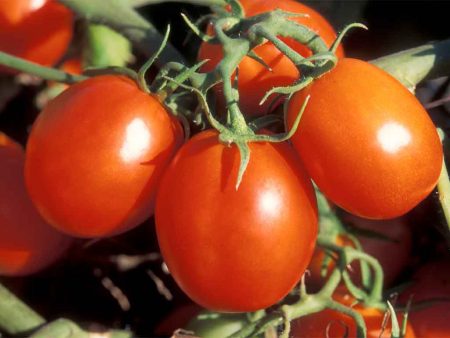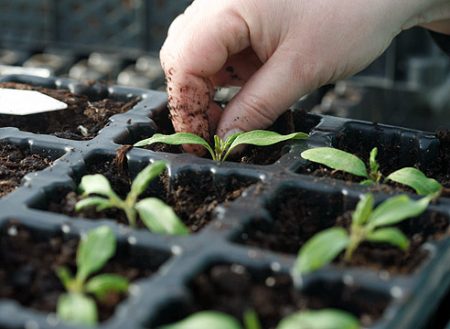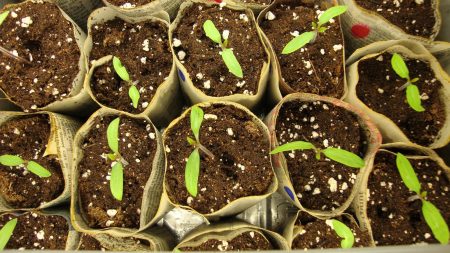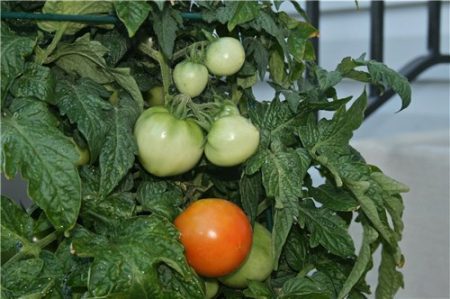 The tomato is rich in mineral salts, vitamin A, B6, B2, PP, E, iron, glucose, fructose, etc. And how pleasant it is to eat tomatoes plucked from your garden, to make summer salads and winter salting. Growing vegetables, namely, tomatoes, at home - this is not a simple matter, and since the tomato is not from the easy "passengers", we will tell you in detail how to grow tomato seedlings and when to plant.
The tomato is rich in mineral salts, vitamin A, B6, B2, PP, E, iron, glucose, fructose, etc. And how pleasant it is to eat tomatoes plucked from your garden, to make summer salads and winter salting. Growing vegetables, namely, tomatoes, at home - this is not a simple matter, and since the tomato is not from the easy "passengers", we will tell you in detail how to grow tomato seedlings and when to plant.
Before planting the seeds must be prepared. Select the best seeds - to do this, mix water with salt and dip tomato seeds there, viable seeds that have emerged, what you need, drowned ones can be discarded, soak for up to 10 minutes (4-5 percent solution). Then wash, dry. Then they should be soaked. Put the seeds in a damp paper towel, cover with something, or make sure that the moisture does not dry out. In this form, keep and need at least 10 hours and no more than 20. They must swell, germinate.
Prepare the soil before sowing: disinfect it with copper sulphate, for example, or chlorine, then moisten immediately before sowing. Mix the soil with humus, peat, drainage, coconut substrate, peat tablets 33-36 mm in diameter are possible. Pour the soil with fertilizer. It is advisable to sow tomatoes in February-March. Sowing depth 0.5-1 cm. After sowing, cover with a film and wait, 7-10 days are required for germination.
The ideal temperature when growing seedlings is 20 - 25 degrees. After germination, it is necessary to provide intensive lighting, tomatoes - photophilous vegetables. The third leaf indicates the possibility of a dive. Use water at room temperature to water the seedlings. Waterlogging is fatal. Further, seedlings must be gradually accustomed to lower temperatures. The resulting seedlings should look like this: a strong stem about 30 cm, 6-8 leaves on the stem, internodes, flower brush.
Continuing the theme of tomatoes (seedlings, growing when to sow), it is important to note that it is better to plant tomato seedlings in the most lighted place, protected from the wind. It is excellent to plant after onions, legumes, root crops. The beds are prepared 7-10 days before the transplant. The row-spacing should be about 60-70 cm, the row should be approximately 60 cm wide and 20 cm deep. To prevent damage to the bush when removing it, wash the ground off with water. Carefully position the root system in the hole in an upright position. All leaflets should remain on the surface. Cover with earth without leaving voids. We take the settled, warmed water and water it, after subsidence it is necessary to add earth. Picky, to the state of the soil, unlike other crops. Lightly acid, neutral, suitable media. Absorbs all nutrients from the soil, thereby impoverishing it.
Tall varieties: one square meter should contain no more than 4 bushes. Varieties with limited stem growth: one square meter should accommodate at least 4 no more than 6 bushes. Seedlings need to be planted at a time when all the frost is behind. Great for this is the end of May. For fertilizer use mineral fertilizers, they are very well absorbed by tomatoes (magnesium, phosphorus, etc.).
Waterlogging is disastrous for everyonevarieties of tomato the fact that not enough oxygen is supplied to the roots. If you grow tomatoes in greenhouse conditions, then monitor the humidity of the air inside with waterlogged air pollination of plants is difficult.
Remove stepchildren, clean the plants, otherwise they will oppress each other, growth will be impossible in such conditions.Exposure to a sufficient amount of sunlight is directly related to the amount of sugar in the fruit. Tomatoes photophilous plants.
Before you go pick tomato seeds (seedlings, cultivation, when to sow, and much more you read in this article), so that the variety of varieties does not confuse you, decide what and when you want to get it. A complete description is attached to the variety. With the requirements formulated, it will be much easier for you to find what you need. It is important to consider the climatic conditions of the place where they will be grown.
Tomatoes - the culture is not easy to care for, it responds to the entire amount of moisture in the soil, to its fertility, to the amount of moisture in the air, to the amount of fertilizer in the soil. He loves the golden mean in everything, but if it is not yet achieved, he instantly gives a reaction in the form of yellow leaves, decay, improper formation, etc. But victory is all the sweeter. Feel free to try without listening to frightening stories. After the test, you will have something to share from your own experience.
In this article we tried to tell as much as we could about how to grow tomato seedlings and when to plant them.







 Low-growing tomatoes, without pinching: 5 of the most delicious varieties
Low-growing tomatoes, without pinching: 5 of the most delicious varieties Why tomato seedlings grow poorly
Why tomato seedlings grow poorly We grow a tomato in a shell
We grow a tomato in a shell Growing tomatoes without watering according to the method of Kazarin
Growing tomatoes without watering according to the method of Kazarin